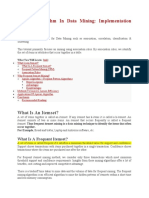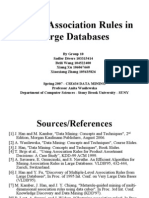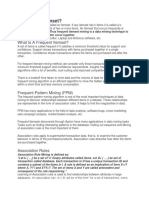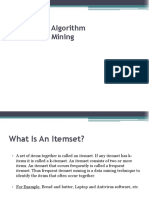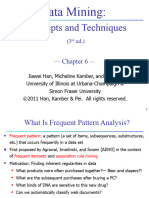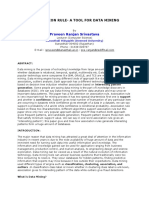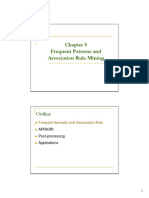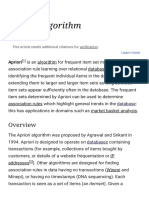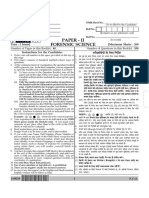0% found this document useful (0 votes)
40 views18 pagesData Mining Methods
The document provides an introduction to data mining methods, covering topics such as frequent pattern analysis, classification, clustering, anomaly detection, and trend analysis. It describes the Apriori algorithm for frequent itemset mining and provides an example of how it works by generating candidate itemsets and pruning infrequent ones.
Uploaded by
pppchan23100Copyright
© © All Rights Reserved
We take content rights seriously. If you suspect this is your content, claim it here.
Available Formats
Download as PDF, TXT or read online on Scribd
0% found this document useful (0 votes)
40 views18 pagesData Mining Methods
The document provides an introduction to data mining methods, covering topics such as frequent pattern analysis, classification, clustering, anomaly detection, and trend analysis. It describes the Apriori algorithm for frequent itemset mining and provides an example of how it works by generating candidate itemsets and pruning infrequent ones.
Uploaded by
pppchan23100Copyright
© © All Rights Reserved
We take content rights seriously. If you suspect this is your content, claim it here.
Available Formats
Download as PDF, TXT or read online on Scribd
/ 18
